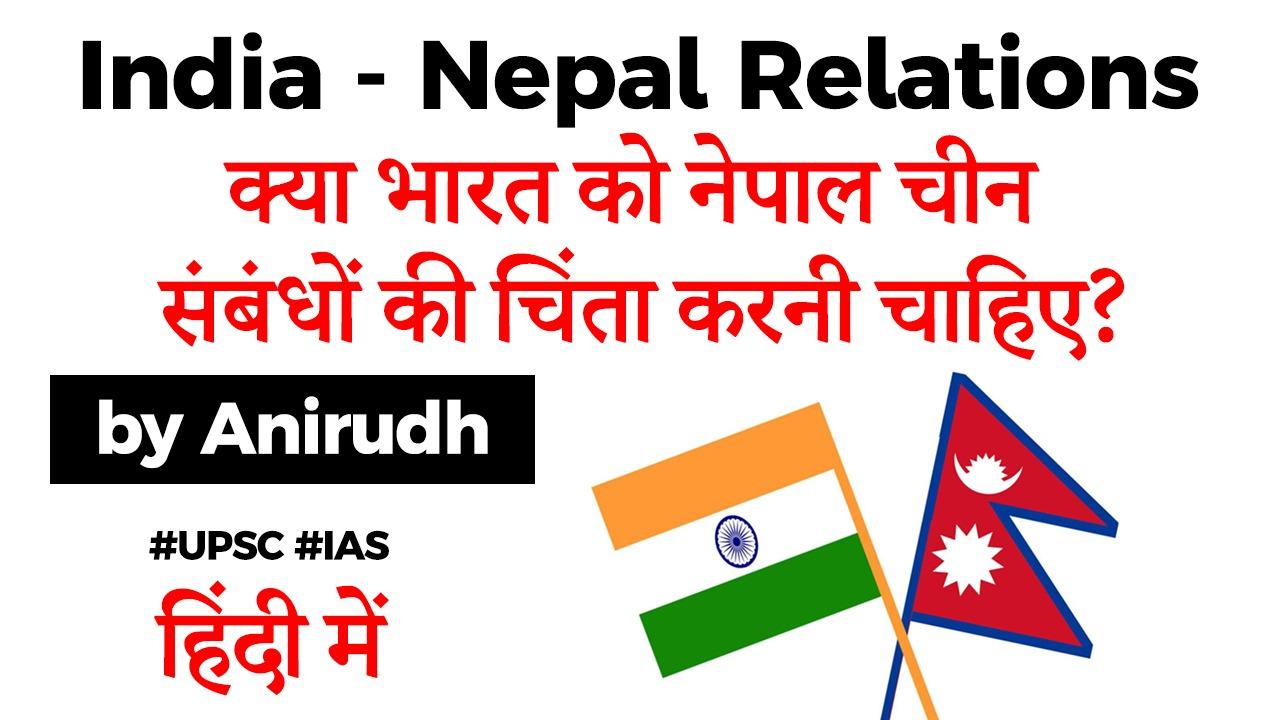Table of Contents
Yam Between Two Rocks
The founder of the modern Nepali state, Prithvi Narayan Shah, described Nepal as a “yam between two rocks”, he was pointing to the essence of Nepal’s geographic condition between the dominant power in the Gangetic plains on the one hand and Tibet and the Qing empire on the other.


Basics: 1950 Treaty of Peace And Friendship
- This enables the Nepali and Indian nationals to move freely across border without passport or visa, live and work in either country and own property or do trade or business in either country. There is a significant number of Nepalis (in millions) living, owning property and working or doing business in India as beneficial aspect of treaty for Nepal. Similarly, many Indians live, own property and do business in Nepal.
1950 Treaty of Peace And Friendship
- The 1950 Treaty of Peace and Friendship gave the illusion of continuity in Nepal’s protectorate relationship with the Raj and its successor, independent India.
- Once the Chinese Communist Party consolidated its power in Tibet and offered assurances to Nepal, Kathmandu’s balancing impulses were back in play.
Treaty of Sagauli
- India and Nepal have so far been following the Treaty of Sagauli (1816) and their own 1960 agreement when it comes to the Kalapani border issue. According to the Treaty of Sagauli, the land east of Mahakali river is regarded as Nepal’s territory, and the land west of it as India’s territory.
- Both sides dispute the origin of the Kali river. Nepal claims the origin is in the higher reaches of this hilly territory, and thus, the regions of Kalapani and Lipulekh belong to them.

Background
- Background Recent issue started after the inauguration of the “new road to Mansarovar” on May 8 in the midst of a global pandemic by India’s Defence Minister, Rajnath Singh. After that Nepal brought new map claiming the region of Kalapani and Lipulekh.




Third party Involvement: India–Nepal Issue
- India’s Chief of Army Staff, suggested that Nepal may be bringing up the issue “at the behest” of a third party, alluding to China. Even History of Nepal gave us clue about India-Nepal-China relationship

- Nepal Tactics The stronger China has become, the wider have Kathmandu’s options with India become.

- Increasing Nepal Ties with China China has again surpassed India as top investor in Nepal in the first quarter of 2019-20 with a total pledge of $ 88 million FDI representing 93 per cent of total committed FDI of $95 million. Nepal is also getting a second Chinese cement plant being set up with $ 140 million investment
India’s Nepal Relation
- Nepal-India relations are deep, wide-ranging, and unique. Geography, History, And Economy make Nepal and India natural partners, sharing vital interest in each other’s freedom, integrity, dignity, security and progress. The two countries not only share an open border and unhindered movement of people, but they also have close bonds through marriages and familial ties, popularly known as Roti-Beti ka Rishta. People-to-people relations are unique strengths of bilateral relations.
PMs on India-Nepal
- Prime Minister Jawaharlal Nehru told the Indian Parliament in 1950, “…we desire above all a strong and progressive, independent Nepal… our chief need, not only our need but also the world’s need is peace and stability in Nepal at present”. Prime Minister Modi in 2014 told Nepal’s Constituent Assembly, “How can India be happy if Nepal is unhappy?”

MEA Spokesperson
- He further added “India has extended all possible technical, medical and humanitarian assistance to Nepal. We have supplied about 25 tonnes of medical aid to Nepal including paracetamol and hydroxychloroquine (HCQ) medicines, test kits and other medical supplies,”

In the end…
- Rather than object to Kathmandu’s China ties, Delhi must focus on how to advance India’s relations with Nepal. It should bet that the logic of Nepal’s economic geography, its pursuit of enlightened self-interest, and Kathmandu’s natural balancing politics, will continue to provide a strong framework for India’s future engagement with Nepal
Similar exercise with Bhutan
- India had conducted a similar exercise with Bhutan to replace the 1949 treaty during 2006-07 by a new set of mutually satisfactory arrangements

Latest Burning Issues | Free PDF






















 WhatsApp
WhatsApp